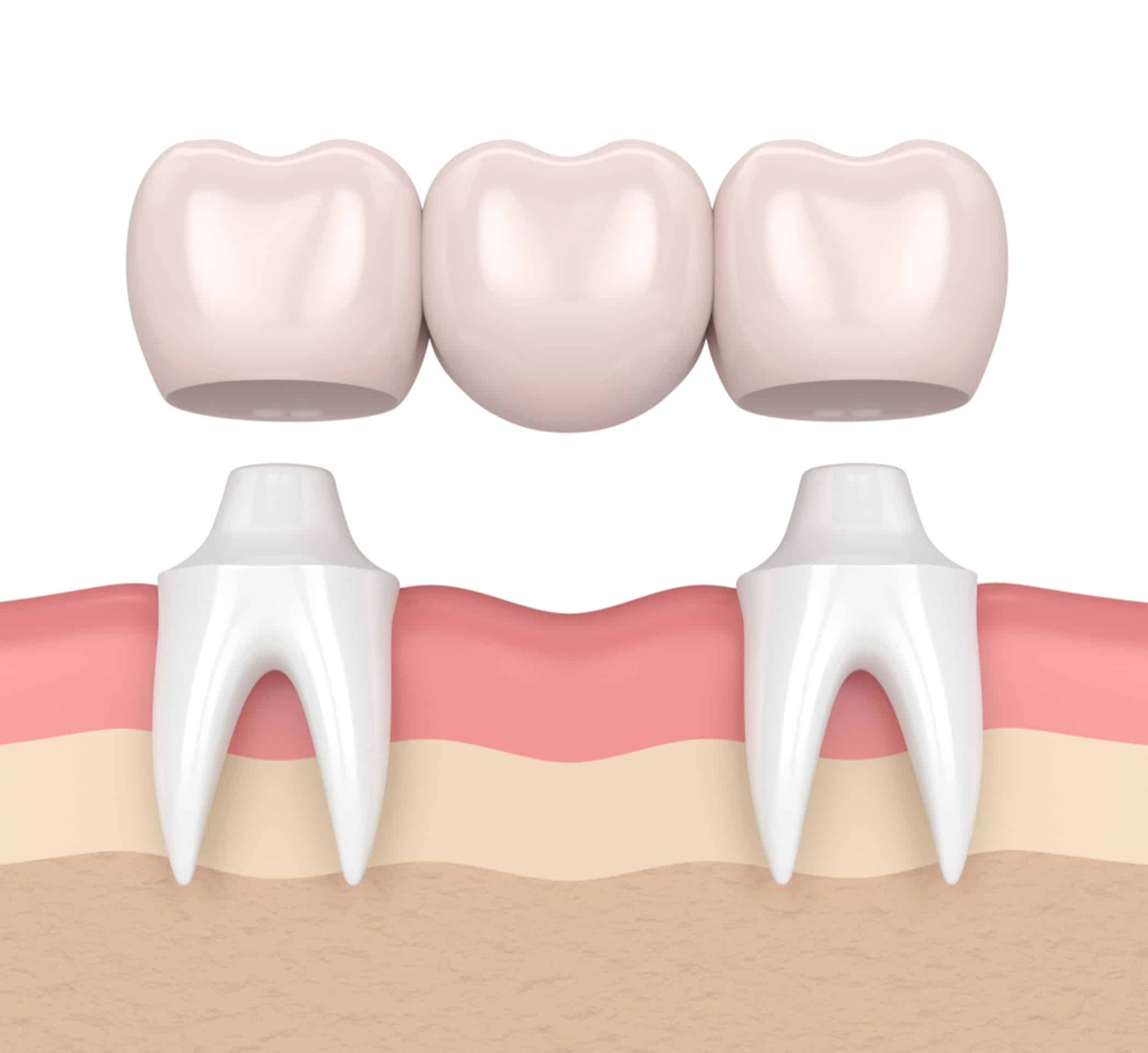Dental bridges in Forest Lake fill gaps left behind by missing teeth. The gaps are filled with artificial teeth held in place by a structure supported by crowns attached to teeth on either side of the gap (called abutment teeth). Dental bridges near you are an alternative solution to partial removable dentures for missing teeth.
Types of dental bridges
There are four primary types of dental bridges — three “traditional” types of bridges and a fourth type that does not rely on your natural teeth at all.
Traditional fixed bridges are made of ceramic material, metal or porcelain fused to metal. A traditional fixed bridge has a crown at each end of the bridge that is cemented onto a prepared natural tooth at each end of the gap. A traditional fixed bridge is not removable, and may contain one or more replacement teeth.
Cantilever bridges are similar to traditional fixed bridges except that they are supported and anchored by just one crown, rather than two crowns in the case of a traditional fixed bridge. A cantilever bridge is appropriate in situations where someone only has natural teeth (to hold the crown) on one side of a gap in their jaw.
Resin-bonded bridges (sometimes referred to as Maryland bridges) are most commonly used to support replacements for missing front teeth. Maryland bridges aren’t supported by crowns, but are held in place by wings or tabs that are cemented to the back of neighbouring teeth.
Implant-supported bridges differ from traditional fixed bridges, cantilever bridges and Maryland bridges. While all those options depend on the presence, strength and ongoing health of neighbouring natural teeth, implant-supported dentures do not. Implant-supported bridges are held in place by implants placed directly into your jaw. As a result, they are the most stable, natural and long-lasting option available.
What makes someone a good candidate for dental bridges?
As a very general rule, anyone missing a single tooth or two to three adjacent teeth may be good candidates to receive dental bridges of one type or another. Whether you in particular are a good candidate for bridges will depend on the results of a thorough review of your remaining teeth, gums, jaw and medical history.
To be a successful candidate for dental bridges, you need to be in generally good dental and overall health and be free of periodontal (gum) disease. If you do have gum disease, it will need to be treated before you undergo procedures to provide dental bridges.
If you are interested in traditional (non-implant-supported) bridges, the remaining teeth on one or both sides of your missing teeth need to be healthy enough to support crowns after the removal of some enamel to allow the placement and bonding of those crowns.
If you are interested in an implant-supported bridge, you must have adequate jaw bone mass and density to be able to receive the implant in your jaw. Having suboptimal bone mass or density may not rule you out as a candidate for dental bridges if treatment prior to providing you with implants can improve the density of your jaw bone or increase the mass of the jaw bone. Even in cases where that is not possible, your dentist in Forest Lake MN may be able to offer alternatives such as “mini” implants or zygomatic implants.
The best way to find out if you are a good candidate for a dental bridge — and what type of dental bridge is appropriate for replacing your missing teeth — is to make an appointment with a dentist near you so that they can carefully review your remaining teeth, jaw and gums. They’ll be able to answer any questions you have.

